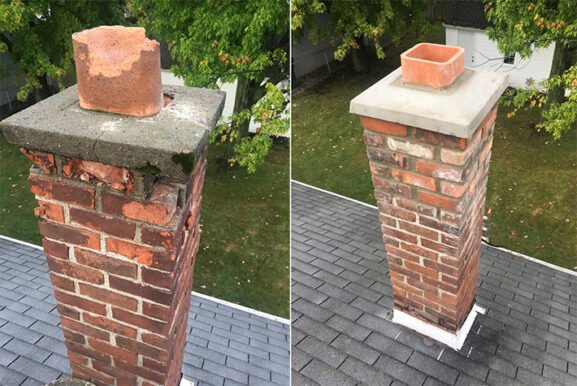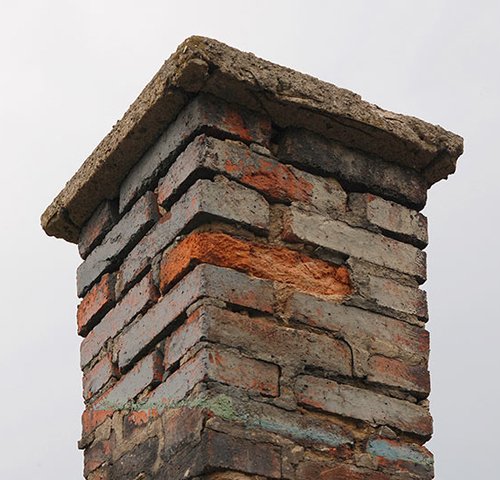Why Timely Chimney Cap Repair Protects Your Home from Costly Damage
Key Takeaways
- A damaged chimney cap can lead to water leaks, pest invasions, and costly structural issues if ignored.
- Timely chimney cap repairs help prevent internal damage to your flue liner, damper, and fireplace.
- Materials like stainless steel and copper offer longer-term protection and require less frequent maintenance.
- Regular chimney inspections are essential for catching chimney cap issues before they escalate.
Understanding the Role of a Chimney Cap
The chimney cap is a small but essential component that sits at the very top of your chimney. It acts as a shield, preventing rain, snow, debris, and animals from entering the flue. When the cap is cracked, rusted, or missing altogether, your chimney system becomes vulnerable to a variety of serious problems.
Without this protective layer, water can seep into the masonry, eroding mortar joints and causing freeze-thaw damage during colder months. Small animals like birds and squirrels can also build nests inside the flue, leading to blockages that disrupt airflow and increase the risk of carbon monoxide buildup.
Repairing a damaged chimney cap isn’t just about fixing a cosmetic issue — it’s about preserving the safety and integrity of your entire chimney system.
Signs Your Chimney Cap Needs Immediate Attention
Many homeowners overlook chimney cap issues because they happen out of sight. However, there are a few key signs that suggest your chimney cap may need repairs:
- You notice water or moisture in your firebox.
- Rust stains appear on the sides of the chimney or on your fireplace damper.
- There’s a strong, musty odor coming from the fireplace during wet weather.
- Debris, such as leaves or animal nesting material, shows up in the flue.
If you notice any of these symptoms, it’s worth having your chimney inspected by a qualified technician. Delaying repairs can make the damage worse and more expensive to resolve over time.
Common Causes of Chimney Cap Damage
Chimney caps are designed to withstand weather, but they aren’t invincible. Exposure to harsh conditions year-round can eventually wear them down. Some common causes of damage include:
- Rust and corrosion: Especially common in galvanized metal caps, rust can weaken the structure and allow gaps to form.
- Wind and storm impact: High winds can dislodge or bend the cap, compromising its protective seal.
- Improper installation: If the cap was not properly sized or fastened, it may come loose prematurely.
- Animal interference: Persistent animals may damage the cap while trying to get inside the flue.
Knowing these causes helps you take preventive action, such as scheduling annual inspections and choosing higher-quality materials during repair or replacement.
Repair Options Based on Material and Damage
The approach to repairing a chimney cap largely depends on the material it’s made from and the extent of the damage. Here are common types of chimney caps and how they’re typically repaired:
- Galvanized steel: These are the most budget-friendly but also the quickest to rust. If the rust is minor, sanding and applying a protective coating might extend its life. In severe cases, replacement is more cost-effective.
- Stainless steel: More resistant to rust, stainless steel caps may only require tightening, resealing, or re-welding.
- Copper: Durable and corrosion-resistant, copper caps are usually repaired with soldering if cracks or gaps appear.
Sometimes, especially if the damage is significant, replacement becomes more practical than repair. A qualified chimney technician will assess whether the structure is still sound or if it poses a risk to the flue.
How a Damaged Cap Affects Your Chimney System
Ignoring a damaged cap can start a chain reaction that affects many other parts of your chimney. Moisture is the biggest threat. When water gets in through an exposed flue, it seeps into the chimney liner, which can crack or deteriorate over time. It also damages the damper and firebox, both of which are essential for efficient heating and safe ventilation.
Water inside the chimney can also encourage mold growth, which compromises indoor air quality. And if you’re burning wood, moisture trapped in creosote deposits can increase the likelihood of a chimney fire.
According to the Chimney Safety Institute of America, water penetration is the single greatest cause of chimney deterioration. Repairing the chimney cap early can prevent these larger — and far more expensive — issues down the line.
The Value of Regular Inspection and Maintenance
One of the most effective ways to avoid major chimney repairs is to catch minor issues early. Professional chimney inspections — typically recommended once a year — allow technicians to evaluate the condition of your chimney cap, crown, liner, and flashing.
During an inspection, experts check for corrosion, loose fittings, and any signs of animal intrusion. If they notice early signs of wear, small repairs can be made on the spot. This proactive approach helps you avoid bigger bills and potential safety hazards later.
Including a cap check during your regular maintenance schedule not only prolongs the lifespan of your chimney system but also keeps your indoor living environment safer and more comfortable.
Choosing the Right Professional for Chimney Cap Repairs
Finding the right contractor to handle your chimney cap repair matters. Look for certified professionals with experience in masonry and flue systems. They should be familiar with local building codes and chimney venting standards. It’s also smart to check for certifications from reputable organizations like the Chimney Safety Institute of America (CSIA) or the National Fireplace Institute (NFI).
A reputable technician won’t just replace or patch the cap — they’ll inspect the surrounding chimney structure, check the crown and flashing, and ensure the entire system is working as it should.
Long-Term Benefits of Repairing the Chimney Cap
Addressing a chimney cap issue now delivers long-term benefits. You’ll prevent costly repairs to your liner, firebox, or interior walls. You’ll avoid dealing with animal infestations or smoke drafting problems. And most importantly, you’ll protect your home from water intrusion, which is often difficult to notice until the damage is done.
A well-maintained chimney cap also improves energy efficiency by keeping cold air, moisture, and debris out of your flue during off-season months.
Final Thought on Protecting Your Chimney Year-Round
Taking the time to repair a chimney cap today can save you from serious trouble tomorrow. Whether you live in a storm-prone region or simply want to preserve your home’s heating system, investing in routine care makes sense. With the right material, proper installation, and regular inspection, your chimney cap will do what it’s meant to — keep the elements out and your chimney system working efficiently.

